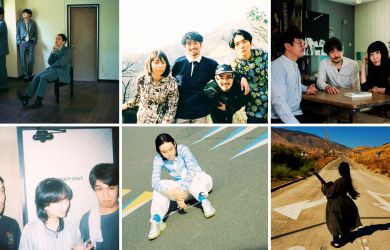
Originally published on metropolis.co.jp on May 2013

“Writing about music,” the saying goes, “is like dancing about architecture.” The implication is that both are nigh impossible. That hasn’t stopped many from doing the former—and now someone’s done the latter.
Spanish flamenco doyenne María Pagés’s new Utopia takes its inspiration from Brazilian architect and cultural colossus Oscar Niemeyer. “I had to do something about the current state of the world, and I felt that he might have some answers,” begins the veteran choreographer in a Tokyo press visit.
“With the financial crisis in Spain, it’s a very bad moment here. I felt the crisis is not only financial, but a crisis of human values,” she continues. “Then I met someone who told me about Oscar Niemeyer. I knew about his buildings, but when I learned more about him as a person and how his architecture reflects his values, I felt I could learn from him.”
Two meetings in Rio de Janeiro with Niemeyer, who continued to practice until his death last December at the age of 104, provided the basis for Utopia. How, then, does one dance about architecture? “Niemeyer’s architecture is full of curves, and movement is full of curves,” Pagés explains about the formidable Brazilian, who among others designed his country’s capital city Brasilia. “Curves are about transformation, and that’s also at the heart of movement.”
At Niemeyer’s studio in Copacabana, Pagés danced for Niemeyer, and the two discovered how much a dancer and architect can have in common. “When he was a child, he liked to draw,” the prizewinning choreographer recalls. “But even before Niemeyer would take a pen, he would move his hand through the air, and his mother would ask, ‘What are you doing?’ and he would say, ‘I’m drawing.’ I was thinking, when my mother asked me the same question, I would say, ‘I’m dancing.’”
Taking cues from Niemeyer’s curvilinear architecture and humanistic ethos, Pagés created a work that utilizes scenography by Niemeyer’s right-hand man, architect Jair Varela, live music by renowned flamenco composer Rubén Lebaniegos, and poetry by Baudelaire, Neruda and Niemeyer himself.
The sleek, contemporary Utopia upends the stereotypical and folkloric Spanish image of flamenco. Pagés, who’s worked with Baryshnikov among others, says such images are long outdated. “My vision of flamenco is convoluted and modern,” she insists. “I never thought of flamenco as a folk art, because it’s our way to express everything. Flamenco is a living art for us.”
“When I first came to Japan I was exposed to very different kinds of arts,” Pagés continues, “that made me realize flamenco can have a dialog with different cultures and art forms.”
Pagés has been to Japan 16 times and is lionized by the country’s devoted flamenco community. It’s intriguing to learn that the influences have worked in both directions. “If I can bring flamenco to Japan,” she adds, “then flamenco can meet other art forms too—it’s a language with which to express myself, and when I understand another art form I can express my personal ideas about it in flamenco.”
Rather than a brittle folk form, Pagés says, flamenco has specific qualities that allow it to evolve. “Flamenco is one of the richest arts we have in the modern era because it started in a marginal space among poor people, and then step by step it became a professional art in the world’s biggest theaters,” she says. “It’s not academic like ballet—it’s popular and has very different roots: Jewish, Gypsy and African… so many cultures made flamenco an art, and the way they come together is what makes it so rich.”
Two decades since she founded her own company at age 27 following a career as a child prodigy in Spain, Pagés increasingly wants to use flamenco to give something back to the society that she feels gave so much to her.
“There are many things I can do as a creator—I can provide valuable messages and share experiences,” she affirms in a rich Seville accent. “Utopia arrived at a moment when it’s evident we need other messages aside from materialism. My life’s work is to understand how I can contribute to society—I don’t dance only for myself, but to be useful.”





